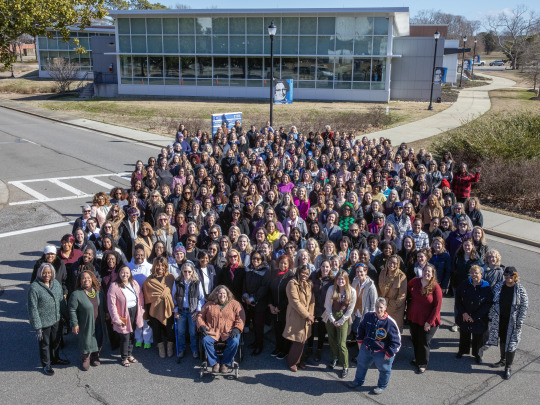#langley research center
Text

"The HL-20 was built at Langley in October 1990 and is a full-scale non-flying mockup. This mockup was used for engineering studies of maintainability of the vehicle, as testing crew positions, pilot visibility and other human factors considerations. The HL-20 was a direct derivative of the HL-10 vehicle tested in the 1960s and bears a very close resemblance to engineering drawings produced at that time. Although evaluated as a possible 'space taxi,' the HL-20, sometimes called the 'Personnel Launch System,' was never built."
Date: October 22, 1991
NASA ID: L-1991-14834
#HL-20 Personnel Launch System#HL-20#Lifting Body#Space Taxi#Spaceplane#NASA#Langley Research Center#Hampton#Virginia#Mock-Up#Mock Up#Mockup#October#1991#my post
60 notes
·
View notes
Photo
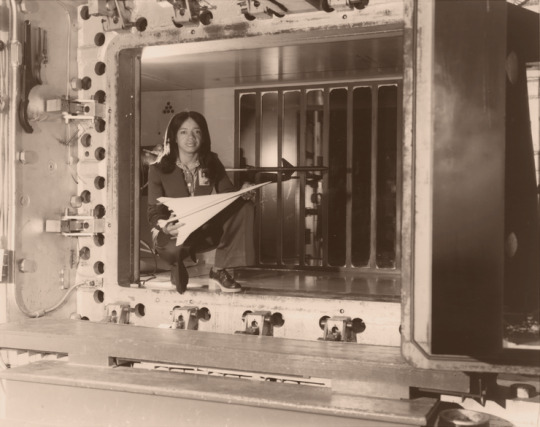
Aeronautical engineer Christine Darden, NASA Langley Research Center, Hampton, Virginia, 1976.
#science#aeronautics#engineering#Christine Darden#NASA#Langley Research Center#Hampton#Virginia#USA#1976
163 notes
·
View notes
Video
youtube
NASA's Unpressurized Lunar Lander
#youtube#Langley Research Center Unpressurized Crew Transport#what if#nasa#LOX#short stay#LH2#luna lander#realistic spaceships
16 notes
·
View notes
Photo
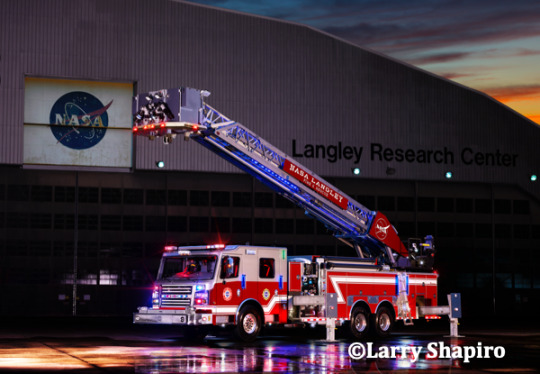
NASA Langley Research Center Fire Department
#larryshapiro#Larry Shapiro#Shapirophotography.net#Larryshapiro.tumblr.com#larryshapiroblog.com#FireTruck#rosenbaueramerica#Rosenbauer#Commander#Cobra#NASA#NASALangley#NASA Langley Research Center FD#night photography
5 notes
·
View notes
Text

LaRue Burbank, mathematician and computer, is just one of the many women who were instrumental to NASA missions.
4 Little Known Women Who Made Huge Contributions to NASA
Women have always played a significant role at NASA and its predecessor NACA, although for much of the agency’s history, they received neither the praise nor recognition that their contributions deserved. To celebrate Women’s History Month – and properly highlight some of the little-known women-led accomplishments of NASA’s early history – our archivists gathered the stories of four women whose work was critical to NASA’s success and paved the way for future generations.
LaRue Burbank: One of the Women Who Helped Land a Man on the Moon
LaRue Burbank was a trailblazing mathematician at NASA. Hired in 1954 at Langley Memorial Aeronautical Laboratory (now NASA’s Langley Research Center), she, like many other young women at NACA, the predecessor to NASA, had a bachelor's degree in mathematics. But unlike most, she also had a physics degree. For the next four years, she worked as a "human computer," conducting complex data analyses for engineers using calculators, slide rules, and other instruments. After NASA's founding, she continued this vital work for Project Mercury.
In 1962, she transferred to the newly established Manned Spacecraft Center (now NASA’s Johnson Space Center) in Houston, becoming one of the few female professionals and managers there. Her expertise in electronics engineering led her to develop critical display systems used by flight controllers in Mission Control to monitor spacecraft during missions. Her work on the Apollo missions was vital to achieving President Kennedy's goal of landing a man on the Moon.
Eilene Galloway: How NASA became… NASA
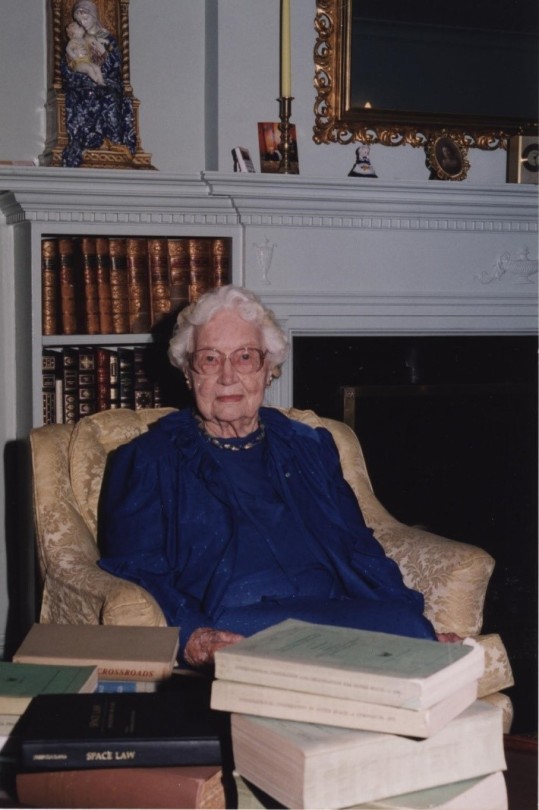
Eilene Galloway wasn't a NASA employee, but she played a huge role in its very creation. In 1957, after the Soviet Union launched Sputnik, Senator Richard Russell Jr. called on Galloway, an expert on the Atomic Energy Act, to write a report on the U.S. response to the space race. Initially, legislators aimed to essentially re-write the Atomic Energy Act to handle the U.S. space goals. However, Galloway argued that the existing military framework wouldn't suffice – a new agency was needed to oversee both military and civilian aspects of space exploration. This included not just defense, but also meteorology, communications, and international cooperation.
Her work on the National Aeronautics and Space Act ensured NASA had the power to accomplish all these goals, without limitations from the Department of Defense or restrictions on international agreements. Galloway is even to thank for the name "National Aeronautics and Space Administration", as initially NASA was to be called “National Aeronautics and Space Agency” which was deemed to not carry enough weight and status for the wide-ranging role that NASA was to fill.
Barbara Scott: The “Star Trek Nerd” Who Led Our Understanding of the Stars
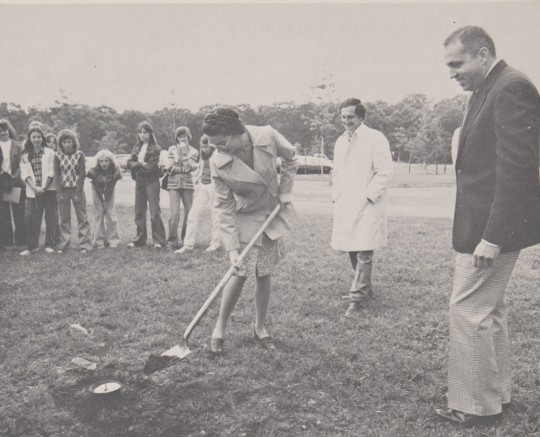
A self-described "Star Trek nerd," Barbara Scott's passion for space wasn't steered toward engineering by her guidance counselor. But that didn't stop her! Fueled by her love of math and computer science, she landed at Goddard Spaceflight Center in 1977. One of the first women working on flight software, Barbara's coding skills became instrumental on missions like the International Ultraviolet Explorer (IUE) and the Thermal Canister Experiment on the Space Shuttle's STS-3. For the final decade of her impressive career, Scott managed the flight software for the iconic Hubble Space Telescope, a testament to her dedication to space exploration.
Dr. Claire Parkinson: An Early Pioneer in Climate Science Whose Work is Still Saving Lives
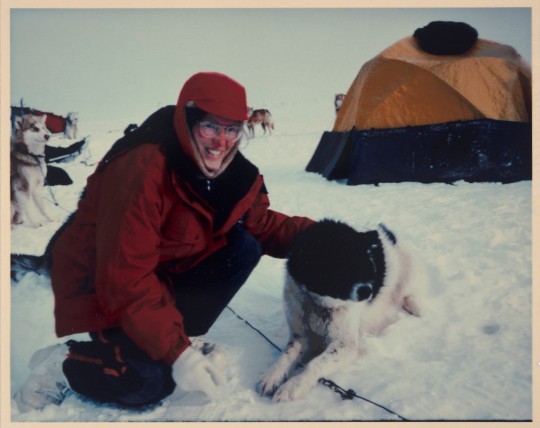
Dr. Claire Parkinson's love of math blossomed into a passion for climate science. Inspired by the Moon landing, and the fight for civil rights, she pursued a graduate degree in climatology. In 1978, her talents landed her at Goddard, where she continued her research on sea ice modeling. But Parkinson's impact goes beyond theory. She began analyzing satellite data, leading to a groundbreaking discovery: a decline in Arctic sea ice coverage between 1973 and 1987. This critical finding caught the attention of Senator Al Gore, highlighting the urgency of climate change.
Parkinson's leadership extended beyond research. As Project Scientist for the Aqua satellite, she championed making its data freely available. This real-time information has benefitted countless projects, from wildfire management to weather forecasting, even aiding in monitoring the COVID-19 pandemic. Parkinson's dedication to understanding sea ice patterns and the impact of climate change continues to be a valuable resource for our planet.
Make sure to follow us on Tumblr for your regular dose of space!
#NASA#space#tech#technology#womens history month#women in STEM#math#climate science#computer science
2K notes
·
View notes
Photo
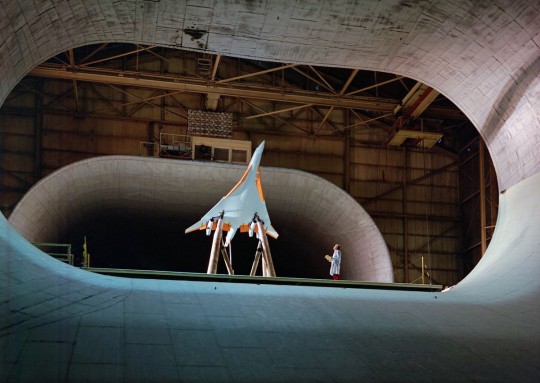
A wind-tunnel model of a supersonic transport undergoing testing at NASA Langley Research Center on January 17, 1975
267 notes
·
View notes
Text

Gas Dynamics Laboratory at NASA's Langley Research Center, Virginia, 1965. (NASA)
164 notes
·
View notes
Text
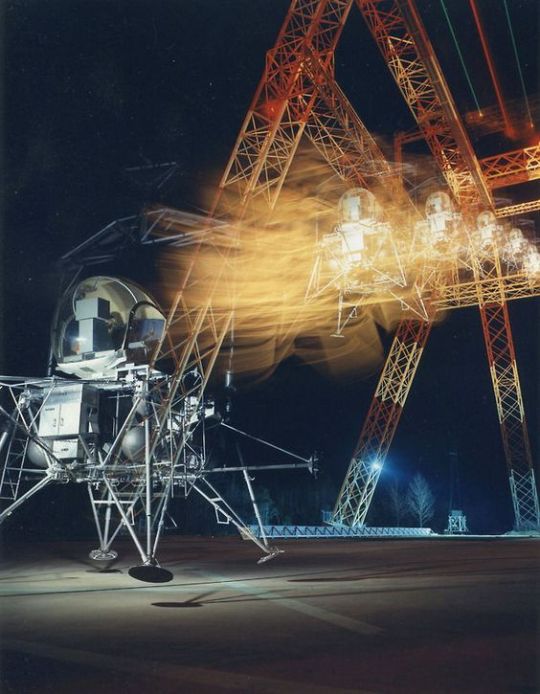
A multiple-exposure image of a lunar module prototype being tested in the Impact Dynamics Research Facility at NASA’s Langley Research Center, 1967
93 notes
·
View notes
Text

A U.S. Navy Brewster F2A-2 Buffalo at the NACA Langley Research Center, Virginia. 9 February 1943
27 notes
·
View notes
Text
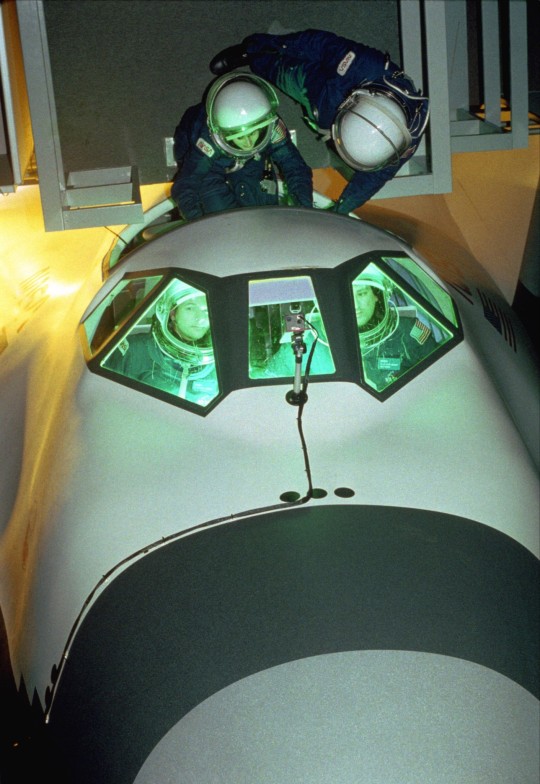
"The HL-20 space taxi, Langley's candidate personnel launch system, is one of several designs being considered by NASA as a complement to the Space Shuttle. Human factors studies, using Langley volunteers as subjects, have been ongoing since March 1991 to verify crew seating arrangements, habitability, ingress and egress, equipment layout and maintenance and handling operations, and to determine visibility requirements during docking and landing operations. Langley volunteers, wearing flight suits and helmets, were put through a series of tests with the craft placed both vertically and horizontally to simulate launch and landing attitudes, The HL-20 would be launched into a low orbit by an expendable rocket and then use its own propulsion system to boost itself to the space station. Following exchange of crews or delivery of small payload, the HL-20 would return to Earth like the space shuttle, making a runway landing near the launch site, The full-scale engineering research model of the HL-20 design was constructed by students and faculty at North Carolina State University and North Carolina A&T State University with the Mars Mission Research Center under a grant from NASA Langley."
Date: January 22, 1992
NASA ID: EL-1996-00163
#HL-20 Personnel Launch System#HL-20#Lifting Body#Space Taxi#Spaceplane#NASA#Langley Research Center#Hampton#Virginia#Mock-Up#Mock Up#Mockup#January#1992#my post
30 notes
·
View notes
Photo
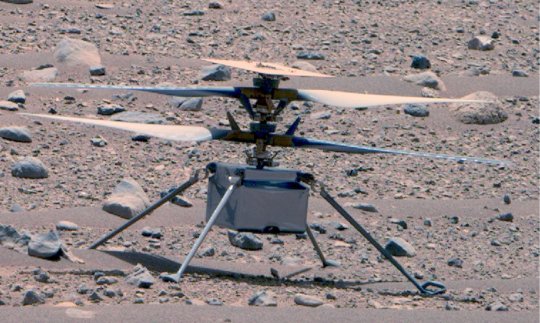
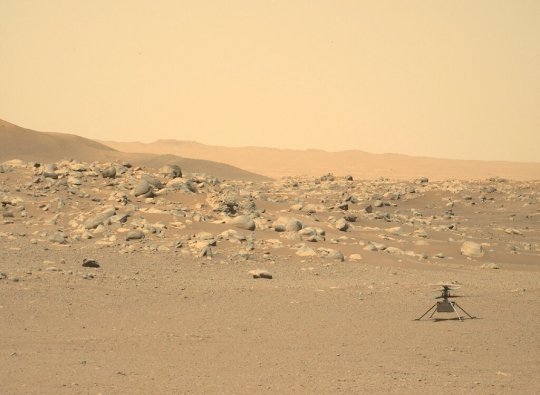
NASA’s Ingenuity Mars Helicopter Phones Home The intrepid rotorcraft may head skyward again within the next couple of weeks. The 52nd flight of NASA’s Ingenuity Mars Helicopter is now in the official mission logbook as a success. The flight took place back on April 26, but mission controllers at NASA’s Jet Propulsion Laboratory in Southern California lost contact with the helicopter as it descended toward the surface for landing. The Ingenuity team expected the communications dropout because a hill stood between the helicopter’s landing location and the Perseverance rover’s position, blocking communication between the two. The rover acts as a radio relay between the helicopter and mission controllers at JPL. In anticipation of this loss of communications, the Ingenuity team had already developed re-contact plans for when the rover would drive back within range. Contact was re-established June 28 when Perseverance crested the hill and could see Ingenuity again. The goal of Flight 52, a 1,191-foot (363-meter) and 139-second-long flight, was to reposition the helicopter and take images of the Martian surface for the rover’s science team. “The portion of Jezero Crater the rover and helicopter are currently exploring has a lot of rugged terrain, which makes communications dropouts more likely,” said JPL’s Josh Anderson, the Ingenuity team lead. “The team’s goal is to keep Ingenuity ahead of Perseverance, which occasionally involves temporarily pushing beyond communication limits. We’re excited to be back in communications range with Ingenuity and receive confirmation of Flight 52.” Sixty-three days is a long time to wait for the results of a flight, but the data coming in indicates all is well with the first aircraft on another world. If the remainder of Ingenuity’s health checks are equally rosy, the helicopter may fly again within the next couple of weeks. The target for Flight 53 is an interim airfield to the west, from which the team plans to perform another westward flight to a new base of operations near a rocky outcrop the Perseverance team is interested in exploring. More About Ingenuity The Ingenuity Mars Helicopter was built by JPL, which also manages the project for NASA Headquarters. It is supported by NASA’s Science Mission Directorate. NASA’s Ames Research Center in California’s Silicon Valley and NASA’s Langley Research Center in Hampton, Virginia, provided significant flight performance analysis and technical assistance during Ingenuity’s development. AeroVironment Inc., Qualcomm, and SolAero also provided design assistance and major vehicle components. Lockheed Space designed and manufactured the Mars Helicopter Delivery System.
80 notes
·
View notes
Text
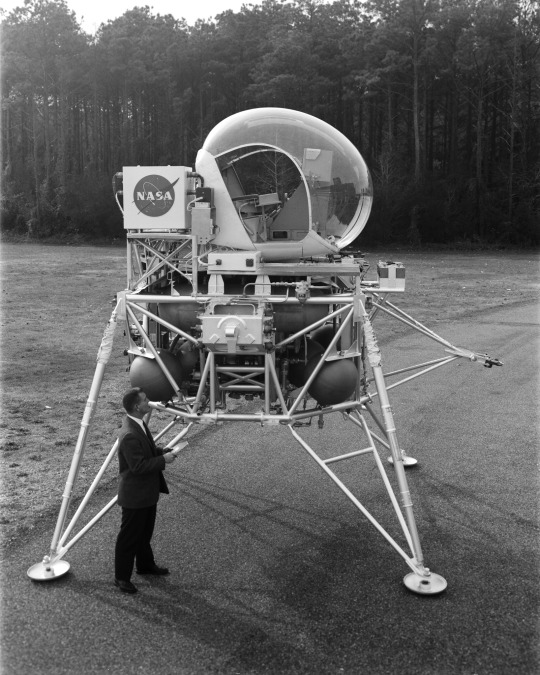
Lunar Landing Vehicle – Vehicle for Lunar Landing Research Facility at Langley Research Center, Hampton, Virginia. This craft was used for simulation of landing on the Moon. | 1963
27 notes
·
View notes
Text

Remembering Marta Bohn-Meyer, the only woman to fly in the SR-71 Blackbird as a crewmember
The SR-71 Blackbird
In the 1960’s, the US Air Force (USAF) developed the SR-71 Blackbird, a plane that could travel more than 3 times as fast as the sound produced by its own engines.
SR-71 T-Shirts

CLICK HERE to see The Aviation Geek Club contributor Linda Sheffield’s T-shirt designs! Linda has a personal relationship with the SR-71 because her father Butch Sheffield flew the Blackbird from test flight in 1965 until 1973. Butch’s Granddaughter’s Lisa Burroughs and Susan Miller are graphic designers. They designed most of the merchandise that is for sale on Threadless. A percentage of the profits go to Flight Test Museum at Edwards Air Force Base. This nonprofit charity is personal to the Sheffield family because they are raising money to house SR-71, #955. This was the first Blackbird that Butch Sheffield flew on Oct. 4, 1965.
Throughout its nearly 24-year career, the SR-71 spy plane remained the world’s fastest and highest-flying operational aircraft. Flying at Mach 3+ from 80,000 feet, it could survey 100,000 square miles of Earth’s surface per hour. And in the off chance an enemy tried to shoot it down with a missile, all the Blackbird had to do was speed up and outrun it.
Marta Bohn-Meyer, the only woman who flew aboard the legendary SR-71 Blackbird as a crewmember
The photos in this post features Marta Bohn-Meyer, the only woman who flew aboard the legendary SR-71 Blackbird as a crewmember.
Born in 1957, Marta Bohn-Meyer began her work in aerospace as a student at Rensselaer Polytechnic Institute in New York in the late 1970s. According to Cosmosphere Blog, for three years, she participated in a cooperative research and education program the school held at NASA’s Langley Research Center in Hampton, Virginia.
When she finished school, she joined NASA’s Armstrong Flight Research Center (then Dryden) as an aeronautical research and operations engineer. She would eventually rise to the post of chief engineer after 22 years at this same location, after a series of roles with increasing responsibility, including:
Remembering Marta Bohn-Meyer, the only woman to fly in the SR-71 Blackbird as a crewmember
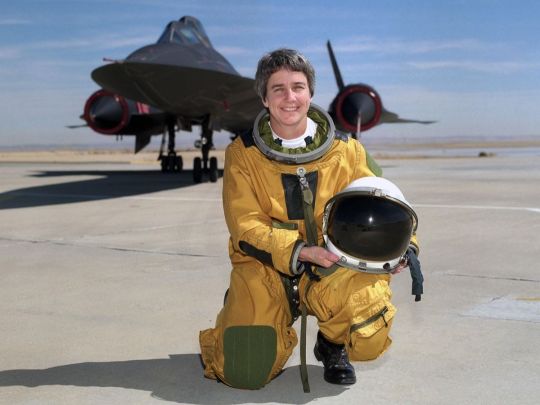
Beginning in her teen years, Marta Bohn-Meyer’s favorite place was in and around airplanes both at work and while off duty. She was an accomplished private pilot and flight engineer, and was the first female crew member to fly at Mach 3 in the SR-71.
Project manager for the F-16 XL Supersonic Laminar Flow Control
Deputy director of aerospace projects
Director of safety and mission assurance
Director of flight operations
Time in the SR-71B with the stick piloting the iconic HABU
In 1991, Bohn-Meyer became the first woman to crew the triple-sonic SR-71 Blackbird. She was assigned as a NASA flight engineer and had been with NASA twelve years by then. Her role was to help NASA obtain high-speed, high-altitude data to improve future aircraft design. The only other woman to have flown in the famously fast plane was Congresswoman Beverly Byron who rode as a VIP guest in 1985.
Bohn-Meyer (who was married to NASA test pilot Bob Mayer) not only flew the Blackbird as Reconnaissance Systems Officer (RSO) but she also had time in the SR-71B with the stick piloting the iconic HABU.
The story of Marta Bohn-Meyer, the only woman to fly in the SR-71 Blackbird as a crewmember

Marta Bohn-Meyer, Dryden’s chief engineer at the time of her recent death, celebrates her successful 1991 first flight at triple supersonic speeds in the SR-71 Blackbird. Bohn-Meyer was one of two women ever to fly in the storied aircraft and the only one to do so as a crew member; Congresswoman Beverly Byron took a guest VIP ride in 1985.
Only woman who flew aboard the legendary SR-71 Blackbird as a crewmember passing away
Widely known as a precision aerobatic pilot, Bohn-Meyer died on Sep. 18, 2005, when the Giles G-300 she flew in an aerobatic practice routine crashed near Oklahoma City.
Retired NASA deputy administrator Fred Gregory recalls being first assigned to mentor her when she began at Langley as a student:
“She was smart, detail-oriented, opinionated and professional well beyond her age.”
Kevin Petersen, director for Dryden (now Armstrong) Flight Research Center at the time of her passing, remarked on Bohn-Meyer’s “strength and her commitment to all she pursued.”
SR-71 print

This print is available in multiple sizes from AircraftProfilePrints.com – CLICK HERE TO GET YOURS. SR-71A Blackbird 61-7972 “Skunkworks”
“We committed lives to this person’s judgment every day; she was the last line of defense against complacency. And she never let me—or Dryden—down.”
@Habubrats71 via X
13 notes
·
View notes
Text
Women of NASA Langley Research Center
In honor of Women’s History Month and those who paved the way for them, hundreds of female staff – from artists to administrative support, educators to engineers, and scientists to safety officers – gathered in front of the Katherine G. Johnson Computational Research Facility at NASA’s Langley Research Center in Hampton, Virginia, on Feb. 6, […]
from NASA https://ift.tt/xP5LOe4
0 notes
Text
Comin’ in Hot: Seven Things to Know About our New Heat Shield
What goes up, must come down, and from space, without burning up in an atmosphere. That’s why we’re pumped for the Low-Earth Orbit Flight Test of an Inflatable Decelerator, or LOFTID. Launching on Nov. 1, 2022, with the National Oceanic and Atmospheric Administration’s (NOAA) Joint Polar Orbiting Satellite System-2 (JPSS-2) mission, this technology demonstration marks the next step in advancing an innovative heat shield design that could one day be used to land heavy payloads – including humans – on Mars!
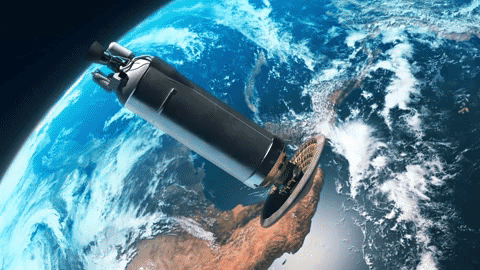
Here are seven things to know about this innovative re-entry system:
1. LOFTID is the first-ever in-orbit test of this technology.
Inflatable heat shields, called Hypersonic Inflatable Aerodynamic Decelerators (HIADs), have been in the works for more than a decade. In 2012, the third of the Inflatable Re-entry Vehicle Experiments (IRVE) launched on a suborbital sounding rocket from the Wallops Flight Facility, demonstrating a 3-meter (10-foot) diameter inflatable heat shield.
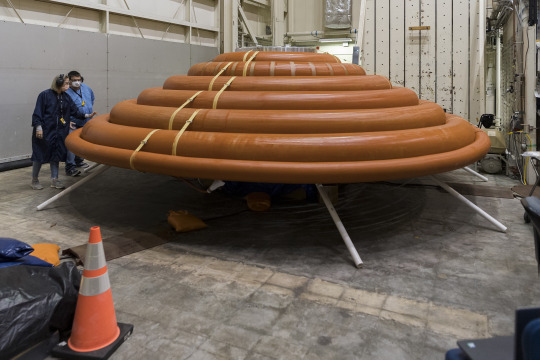
But the LOFTID re-entry vehicle, at 19.7 feet (6 meters) in diameter, will be the largest blunt body aeroshell to ever go through atmospheric entry. Designed to withstand temperatures as high as 2900°F (1600°C), this first-ever in-orbit test of this technology will prove if it can successfully slow down large payloads – such as crewed spacecraft, robotic explorers, and rocket components – enabling them to survive the heat of re-entry at planetary destinations with an atmosphere.
youtube
2. You can find out how this tech works in real-time.
LOFTID is unique in that all operations will happen within a few hours of launch. After the JPSS-2 satellite safely reaches orbit, the LOFTID vehicle will separate from the upper stage of the Atlas V rocket and begin re-entry into Earth’s atmosphere. If all goes as planned, the technology will help the vehicle decelerate from hypersonic (more than 25 times faster than the speed of sound) down to subsonic flight, less than 609 miles per hour for a safe splash down and recovery from the Pacific Ocean.
While in flight, engineers at NASA’s Langley Research Center will receive location data every 20 seconds and onboard sensors and cameras will record more comprehensive data about the technology’s performance. You can get a behind-the-scenes look at Langley’s Flight Mission Support Center where the LOFTID project team will be monitoring the flight test at NASA.gov/live following the launch.
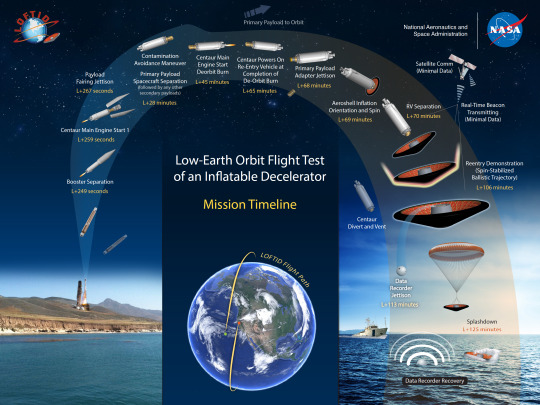
3. A lemon-sized capsule ejected into the Pacific Ocean will hold key flight data.
The LOFTID re-entry vehicle will record both sensor and camera data during its flight. The data will include the temperatures and pressures experienced by the heat shield and will illustrate how well the technology performed during the demonstration.
Although the goal is to retrieve the LOFTID re-entry vehicle after it splashes down in the Pacific Ocean, the team wanted a back-up option just in case they can’t recover it. Enter the tiny yellow package called an ejectable data module (EDM) which will also record flight data. The EDM will be released from the spacecraft at an altitude of about 50,000 feet. It will free fall into the Pacific Ocean off the coast of Hawaii and should land within 10 miles of the spacecraft’s splash down location. A recovery team, that has practiced hide-and-seek of the EDM on land and sea, will use GPS to search an approximately 900-mile area of the Pacific Ocean to find their “lemon.”
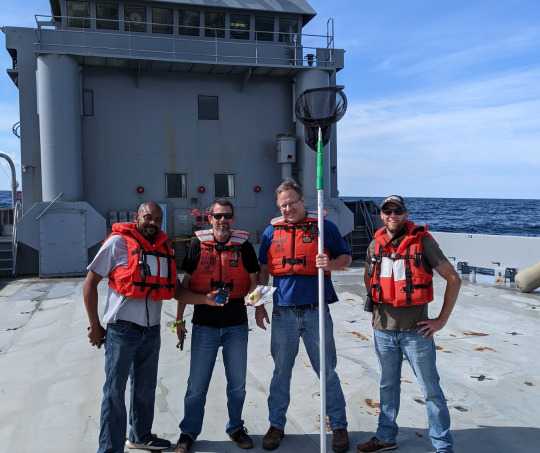
4. This heat shield packs a punch.
Although NASA has historically relied on rigid aeroshells, parachutes, and retro-propulsion (rockets) to decelerate people, vehicles, and hardware during entry, descent, and landing operations, a benefit of inflatable heat shields is that they take up less space in a rocket, allowing more room for other hardware or payloads. LOFTID’s aeroshell has been folded and tightly packed down to 4 by 1.5 feet for launch and stacked in the United Launch Alliance (ULA) Atlas V rocket payload fairing.

5. LOFTID is dedicated in honor of one of its innovators.
LOFTID was developed as a partnership with ULA and is dedicated to the memory of Bernard Kutter, ULA manager of advanced programs, who passed away in August 2020. Kutter was instrumental in advancing the inflatable heat shield design and developing the plan to test the system on an Atlas V rocket. He was an advocate for both space technology and expanding access to space. Kutter’s NASA and ULA counterparts agree that LOFTID is unlikely to have made it to space without his vision and passion.
youtube
6. LOFTID is made of tough stuff.
Synthetic fibers make up the inflatable structure, braided into tubes that are, by weight, 10 times stronger than steel. The tubes are coiled so that they form the shape of a blunt cone when inflated. The thermal protection system that covers the inflatable structure can survive searing entry temperatures up to 2,900 degrees Fahrenheit. Researchers used the same heat-shielding materials to create a fire shelter prototype for firefighters battling forest fires.
youtube
7. You can make your own LOFTID Halloween costume!
Still looking for an out-of-this world Halloween costume? With a few commonly found materials, like orange pool noodles and duct tape, you can create your own LOFTID costume. However, we make no promises of protecting or slowing you down from becoming the life of the party.

Follow @NASA_Technology for the latest updates on LOFTID. Don’t miss our live coverage leading up to launch from the Vandenberg Space Force Base in California. The NASA Edge JPSS-2 Tower Rollback Show airs live on NASA TV and YouTube on Tuesday, Nov. 1 at 12 a.m. EDT, and NASA TV live launch coverage will begin at 4:45 a.m. EDT.
Make sure to follow us on Tumblr for your regular dose of space!
1K notes
·
View notes
